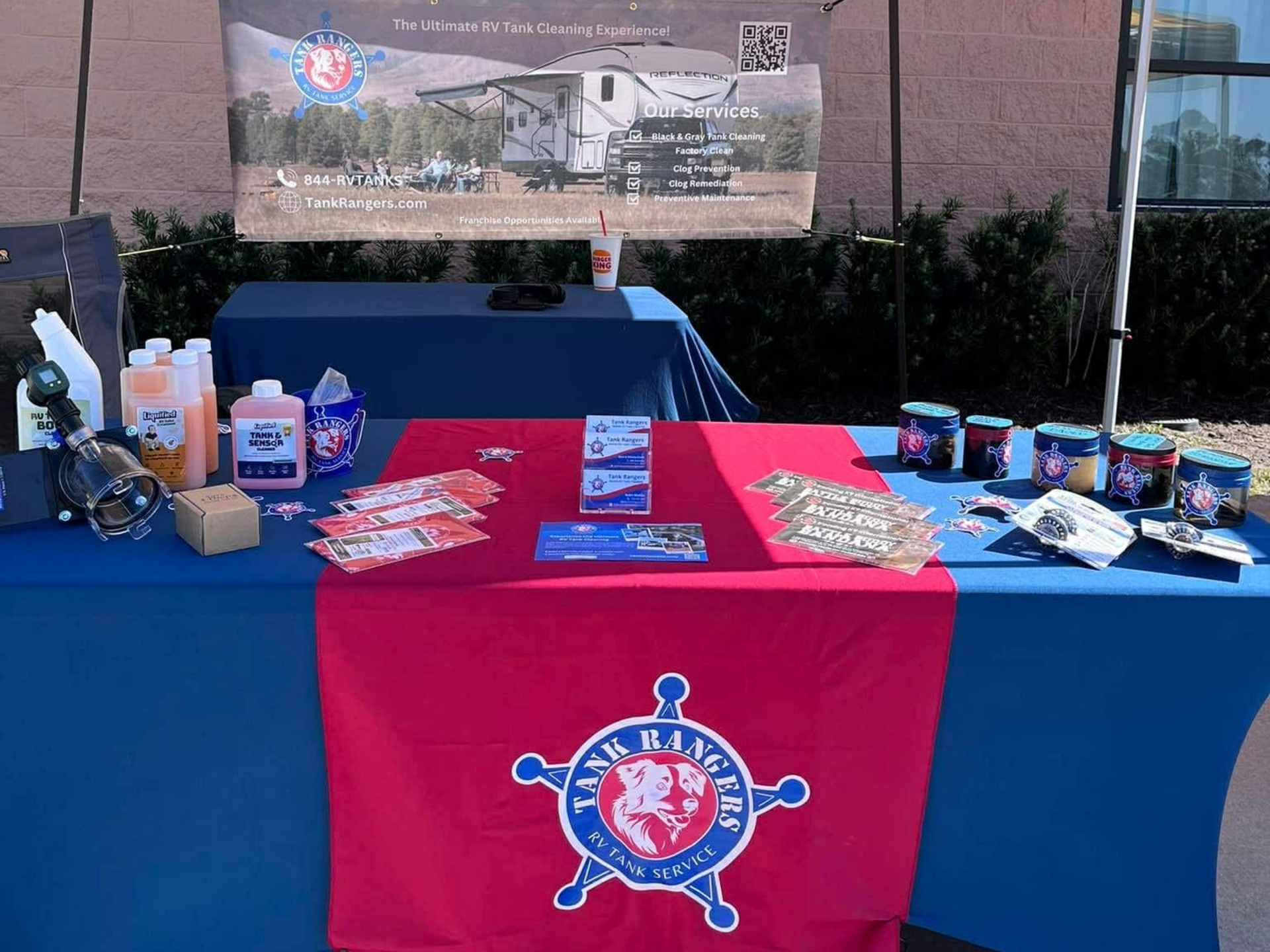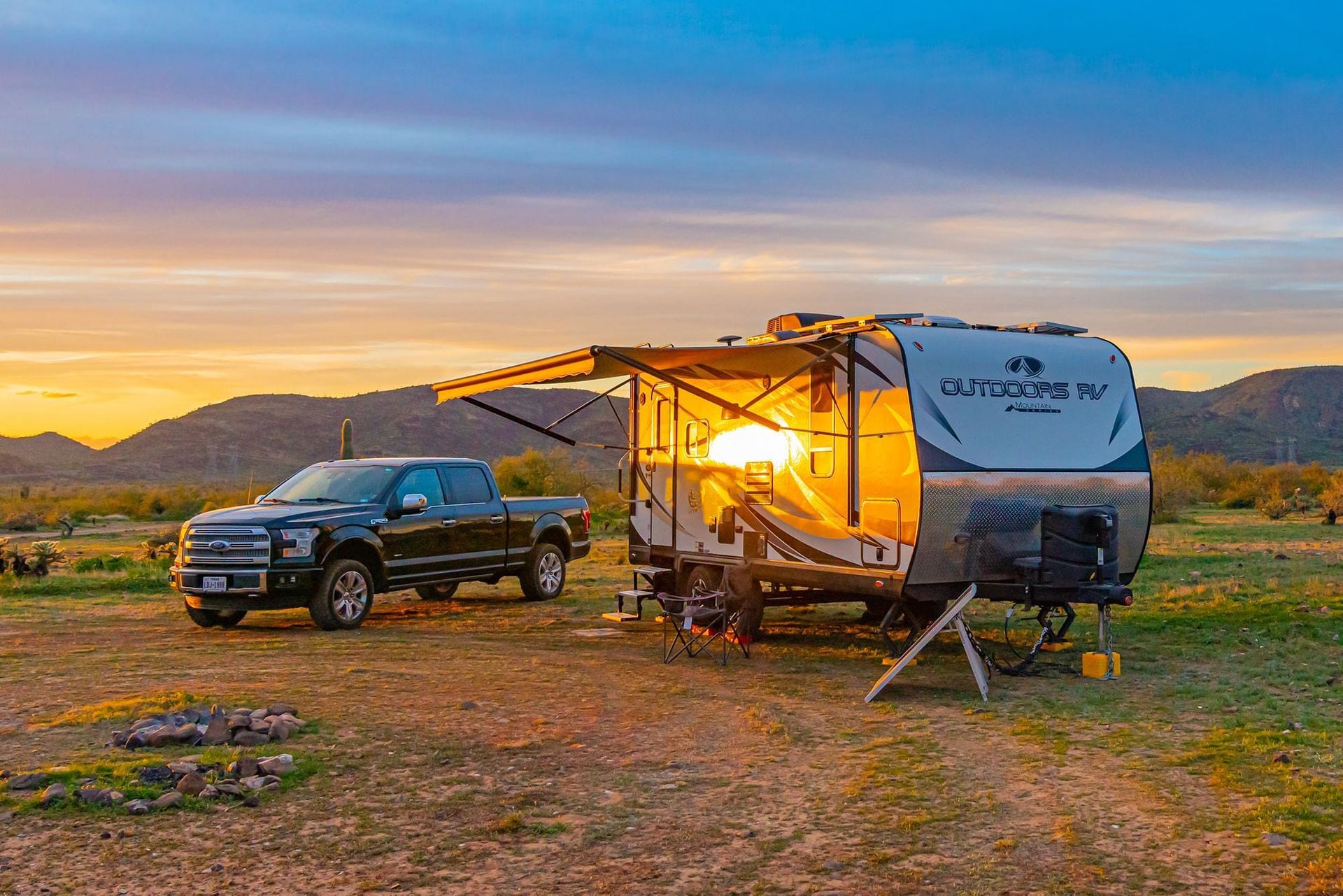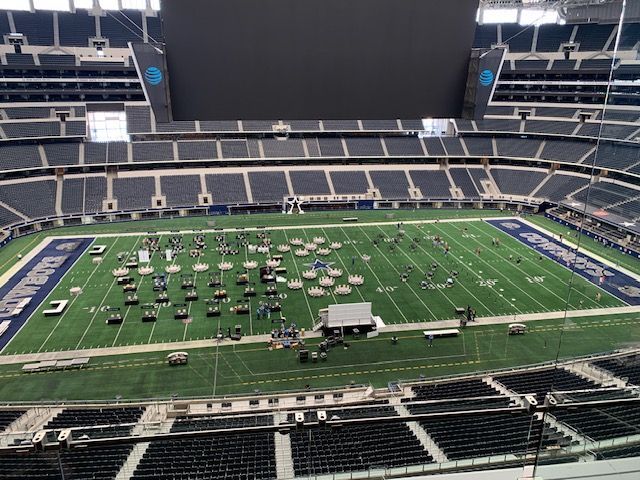How to Dump RV Tanks (it’s not so icky!)
April 5, 2025
After towing, I think the single most daunting idea when it comes to campers is the concept of having to deal with the poops and the pees. In a camper, that stuff goes into a tank and then has to be periodically dumped when the tank is full. Cue visions of the RV movie. But, it’s really not that bad- honest !
Let me clarify that I make a distinction between dumping my tanks (simply emptying the gray/black water out) and flushing my tanks (refilling with water and repeatedly dumping until it’s running clear). I flush my tanks as often as possible to keep odors at bay with less chemicals needing to be used.
First things first, the situation that you’re in drives how things work:
Expand each scenario to learn more.
At a campsite that has sewer hookups
An important consideration- you should never leave your black tank valves open, even when you’re hooked up to a sewer site. This is because there isn’t enough water with each flush to carry all of the solids out of the tank and down the hose. Leaving the valves open builds what is affectionately known as a “poop pyramid” of hardened crap that is no fun to deal with. Always leave your black tank closed until it’s time to dump your tanks! And, when possible – only dump your tanks when they are 1/2 or more full. I target 2/3 to 3/4 to completely full before I empty my tanks. If your tank isn’t full enough, simply run water by holding down the foot pedal until the tank fills to the desired level.
Your gray tanks however, can be left open as long as you close them and accumulate water before you’re ready to dump the tanks. (Though, some people are of the opinion that they don’t want whatever sewer flies and nastiness in the ground having an open path to their camper and choose to leave them closed. I can’t say that I blame these people!)
So now- you’re actual sewer hookup. As I touched on in my post about having 2 sets of sewer hookups on my camper, here’s what (I feel) you need:
- Clear elbow connection at the RV
- 10′-30′ sewer hose(s)
- A 90-degree elbow to connect to the site or a sewer donut to give you a positive connection to the site’s sewer connection
If you have 2 sewer connections like I do, add more hose and a wye to connect them together.
The dumping and flushing procedure is pretty simple:
- Have all connectors and hoses connected.
- Starting with a gray tank, pull the handle for a few seconds (10-15) to let some gray water run through and then close it again.
- Inspect each fitting and sewer hose for leaks; best to have a mess with some gray water than black water.
- Now, pull the black tank’s handle and let the poo fly. Watch it in the clear elbow until it stops and then close it off*.
- If you have a black tank flush, run a hose to it and let it run. If you do not have a black tank flush, go run water in the toilet by holding the flush pedal down. * In the previous step we closed the black tank, so you have to be careful to not overflow your tank. There’s only one place it can go and that’s the bathroom floor. Personally, I set a timer on my phone and let it run for 6 minutes.
- Pull the black tank’s handle and let the watered-down poo fly. Again, watch it in the clear elebow until it stops and then close it off again*.
- Repeat steps 5 & 6 until you are seeing basically clear water with no chunks of “stuff” or toilet paper flush through. For me, this is usually 3 to 4 flushes. I’ll often shorten the duration of water running in for the repeats of step #5.
- Empty any gray tanks that are hooked up to this sewer outlet.
- Repeat steps 1 through 8 if you have a second sewer connection.
Note, a full dumping and flushing on my camper – 2 black tanks and 3 gray tanks takes me a good HOUR.
I have never seen the need for the sewer supports and simply don’t use them. The weight of the water has never been an issue for me and when I go to disconnect my hoses- I simply walk the hose back to the sewer connection, squeezing the hose/milking the water out of the hose as I go. If you are going use a sewer support, a really cheap DIY option is just buying a piece of vinyl gutter and then using boards or Lynx Levelers to achieve the slope.
Out of respect for the next camper and “that’s just nasty”- don’t use the fresh water connection to clean out your sewer hose.
At the end of your trip at a dump station
At the dump station, you possibly won’t have time to repeat the flushing process if there are other people waiting. At that point, you’re likely only going to be able to dump your tanks and not actually flush them. The process is pretty basic:
- I still think you should have the clear elbow connected.
- You will usually only need 5′ to 10′ of hose as you can usually have the camper pretty close to the dump station outlet.
- Flip open the dump station cover and insert your hose down into the hole. There is usually something heavy that you can lean against it all to make sure the hose doesn’t pop-out — everything from rocks to a bowling pin (true story). I personally prefer to have a second person and just have them keep their foot on the hose (read: my super awesome 9 year old daughter or beautiful blushing wife).
- Start with the 10-15 seconds of gray water to make sure the hoses and connections are all sound. (Pull the handle, sing the ABCs song and close the handle.)
- Inspect each fitting and sewer hose for leaks; best to have a mess with some gray water than black water.
- Now, pull the black tank’s handle and let the poo fly. Watch it in the clear elbow until it stops and then close it off.
- Next, empty any gray tanks that are hooked up to this sewer outlet.
- Repeat steps 1 through 8 if you have a second sewer connection – either with moving the camper forward or lining the dump station between the two and using a long enough sewer hose.
Out of respect for the next camper and “that’s just nasty”- if the water source at the dump station is labeled “potable”, don’t use it to clean out your sewer hose.
In the middle of your trip and at a campsite that doesn’t have sewer hookups
Now, say you’re camping at a site without sewer but your tanks are full and it’s time to offload some gray or black water. There are still a couple of scenarios that come into play:
The campground offers a honey wagon service
What is a honey wagon service you ask? The honey wagon is usually a truck/tractor and trailer combination that goes from campsite to campsite sucking out the contents of the tanks. You usually have to signup the day before at campgrounds that you want honey runs made to your site. They will have varying rules (for instance, one place I go to requires slides to be put in and out of the way for them).
I’ve only done this once and was left with tanks that were still 1/4-1/2 full when they were done and I don’t think it was merely toilet paper on the sensors. They emptied my 5 tanks in less time than it takes to simply dump 2 of them. Next time, I’ll make them use the clear elbow and will verify from that the tanks are empty before letting the guy gitty-up and go.
However, as the camper- you don’t need any equipment, not even a sewer hose. They do it all.
You have a tote to offload the stinky-stinkies into
If you have a tote to offload the gray and black water into, you would fill that using the same basic premise as the others:
- Clear elbow connection and short sewer hose (5′ or shorter).
- Stick the end of it in the tote.
- Fill it to where it’s only mostly full.
- Disconnect the sewer hose from your camper and empty what remains in the hose to the tote.
- Drag the tote to the dump station (being mindful that water is heavy – like 8 pounds per gallon heavy).
- Empty the tote at the dump station.
- Repeat until your tanks are empty.
Many handles on totes will hook onto a ball hitch and can be pulled behind of your vehicle at an excruciatingly slow speed. (Pro-tip from Dog Folks on RV.net – if going downhill to the dumpstation with the tote, bungee cord the handle to the ball to keep it from passing the truck! EWW! )
Some people will use what is called a macerator pump which lets them pump into a 1″ garden hose (in lieu of a 3″ stinky slinky) and up hill. They’ll put the tote into the back of their tow vehicle and pump the tanks out up hill thus saving them the super-slow drive through the campground.
You have neither- honey wagon offered or tote
You’re SOL and are going to need to either hitch up and drag the camper to the dump station or buy a tote.
I’d like to be able to dump at home
The final option is to empty your RV tanks at home. It’s really outside of my area of expertise, but there are 2 basic options here:
- If you’re on a septic system, you can tap into the septic cleanout and plumb in a home dump station. Then, you would essentially have a sewer hookup like I first described.
- Some people will buy a macerator pump and run a hose into their toilet and pump out their tanks that way.
- Or, it’s kind of gross and disgusting, I’ve actually dumped into 5 gallon buckets and dumped that into the toilet at home. I use my clear elbow to direct the flow directly into the bucket.
Other blogs you might like...












